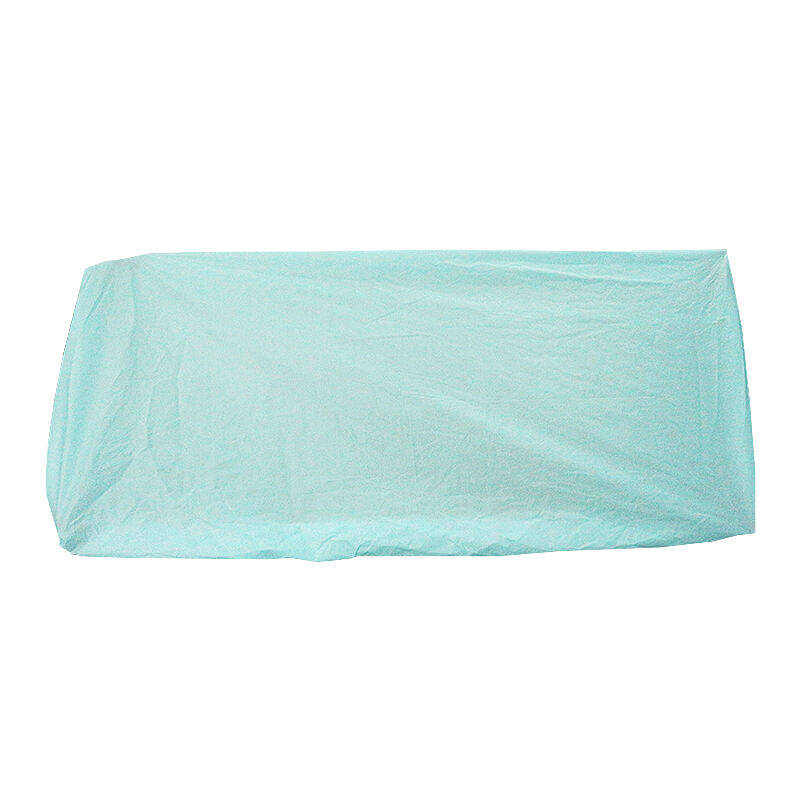Contact Info
200 meters east of Xihuang Village Committee, Linchi Town, Zouping City, Binzhou City, Shandong Province (China)
In healthcare settings, PE film is an important part of surgical gowns, medical PE bags, and disposable gloves because of their barrier protection against liquid and germ contamination. In the healthcare environment, there are not only potentially dangerous germs, but also liquid blood, as well as medicinal and pharmaceutical solutions. Having well made PE film will keep penetrating liquid germ safe and protects medical workers as well as patients from possible infections. However, poorly made PE film will allow liquid germ contamination and cross infections. This is an extremely dangerous situation in healthcare. Quality medical PE film products can be found at the website https://www.mepromedical.com/, which are vital to medical barrier protection.
The density of medical PE film is one of the factors that determine how well it can perform as a barrier to liquid and germ contamination. PE film can be categorized as low, medium, or high density. High density PE film is where its molecular structure is more compacted and there are less molecular gaps. This more compact structure makes it more difficult for liquid molecules and germs to pass through. As a result, high density molecular PE film improves barrier protection.

Medical applications may prefer low-density polyethylene films for applications with lower barrier requirements since films with loosely arranged polymers offer relatively weaker barrier performances. It may be best to select polyethylene films with an appropriate density for medical applications. For instance, medical packaging bags that need to provide reliable protection against germs and liquids typically utilize high-density polyethylene films for dependable barrier protection.
The other important characteristics of medical PE films that ensures barrier protection is the uniformity of thickness. If the PE film is unevenly thick, the weaker points of the barrier will be the thinner sections. Thin membranes will be more likely to be breached by liquids and germs, overall diminishing the barrier film performance. Medical PE films of superior quality will have uniform thickness as a result of stringent control during the manufacturing stages. Uniform thickness ensures the film provides the intended barrier performance in liquid and germ penetration from all areas. Thickness uniformity ensures reliable barrier performance. Medical films at https://www.mepromedical.com/ have uniform thickness to provide even barrier performance protection.
The smoothness of medical PE film and the use of coating technology also helps with barrier protection. A PE film with smooth surfaces minimizes the adhesion of liquids and germs, which makes it harder for them to settle and penetrate the film surface. Furthermore, some medical PE films have barriers made of certain materials to improve barrier performance. For instance, the surface of a PE film can be enhanced with a layer of hydrophobic coating which acts to further improve liquid repellency by helping to prevent liquids from spreading and soaking in. Surface coatings with antibacterial substances can also aid in germ growth and surface film reproduction, which in the end optimizes the barrier protection. The combination of surface treatments makes the medical PE film more assured in counteracting the penetration of liquid and germs.
The most important Physical Properties of medical PE film which helps maintain its barrier integrity during use is its tensile strength and elasticity. PE film can be stretched, and in some medical operations or for packaging and transportation, it is folded or even subjected to friction.

PE films that aren't strong with low elasticity easily crack or break under pressure. Once barriers break, their performance is compromised, and gaps are made, where liquids and germs can pass through. High-quality medical PE film has strong elasticity and tensile strength, and it can withstand some pressure. This makes sure that PE film is undamaged during the entire time it is being used, and it keeps offering barrier protection against liquids and germs. When buying medical PE film, consider mechanical properties because some are suited for particular use environments.
How to Choose High-Quality Medical PE Film from https://www.mepromedical.com/
There are some factors to consider when buying medical PE film with dependable barrier protection against liquids and germs from https://www.mepromedical.com/. First, determine the situation and the required barrier level to select PE film with the right thickness and density. For instance, choose thick, high-density PE film for surgical gowns that require high barrier protection. Then, check the PE film quality inspection reports to ensure thickness uniformity, tensile strength, and other indicators comply with medical standards.
Third, find out what kind of surface treatment technologies are used on the PE film, for example, whether it has a special coating that improves barriers. Fourth, look for the product certification of the PE film. Having the relevant medical certification (e.g. FDA, CE) tells you that the quality and barrier performance has gone through rigorous certification. Lastly, check out the customer reviews and application cases of the medical PE film on the site to see the actual effectiveness and barrier performance for protection to make sure that the PE film you chose can fulfill the actual medical requirements.